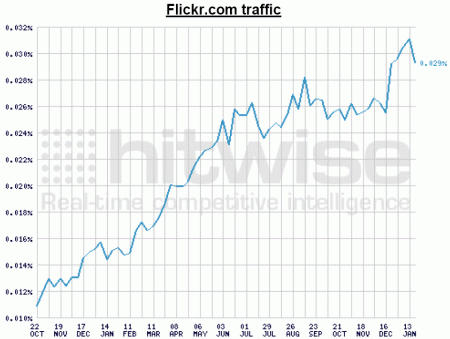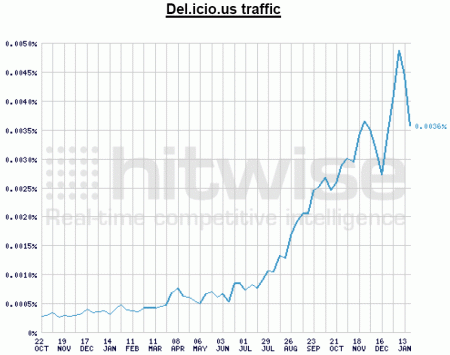Sociologists have investigated the phenomenon of tags
The organization Pew Internet & American Life Project conducted an unusual study, the purpose of which was to analyze the phenomenon of "tagging content", that is, the use of tags on the Internet ( PDF ). Sociologists found out that in December 2006, about 28% of all American users participated in tagging and classifying online content. Every day, 7% of Internet users do it.
As you know, tags (tags) are supported by many Web 2.0 generation sites as a way to classify content by users and search. Folksonomy has replaced the usual taxonomy. The most prominent examples of the growing popularity of tags are the sites Del.icio.us (classification of bookmarks), Flickr (photos), YouTube (videos) and Technorati (blogs). Tag support is implemented on each of these sites, which is the key to their success. According to statistics Hitwise, traffic to these sites over the past three months has increased several times (see graphs).


')
Not only new Web 2.0 sites, but also many old services also implement tags. For example, the Amazon store introduced tag support for tagging products.
Although tags are found in many social services, but in some places they are called differently. For example, Google prefers to call tags "labels." There are both "bookmarks" and "tags." One way or another, all of these terms describe the process of classifying online content. Here's how the process of tagging content is described in the reference sections of various sites: on Flickr , on Del.icio.us , on Technorati , on Furl , on Yahoo , on YouTube , on Wikipedia .
From the point of view of sociology, “taggers” look exactly the same as the early users of any other technology: these are young people with an education level and income above average, with a good Internet access channel. Men and women are about the same. Actually, this is the portrait of the audience of Web 2.0 services.
As you know, tags (tags) are supported by many Web 2.0 generation sites as a way to classify content by users and search. Folksonomy has replaced the usual taxonomy. The most prominent examples of the growing popularity of tags are the sites Del.icio.us (classification of bookmarks), Flickr (photos), YouTube (videos) and Technorati (blogs). Tag support is implemented on each of these sites, which is the key to their success. According to statistics Hitwise, traffic to these sites over the past three months has increased several times (see graphs).


')
Not only new Web 2.0 sites, but also many old services also implement tags. For example, the Amazon store introduced tag support for tagging products.
Although tags are found in many social services, but in some places they are called differently. For example, Google prefers to call tags "labels." There are both "bookmarks" and "tags." One way or another, all of these terms describe the process of classifying online content. Here's how the process of tagging content is described in the reference sections of various sites: on Flickr , on Del.icio.us , on Technorati , on Furl , on Yahoo , on YouTube , on Wikipedia .
From the point of view of sociology, “taggers” look exactly the same as the early users of any other technology: these are young people with an education level and income above average, with a good Internet access channel. Men and women are about the same. Actually, this is the portrait of the audience of Web 2.0 services.
Source: https://habr.com/ru/post/2768/
All Articles